Updated: 07-Oct-2020
It was the "National Advisory Committee for Aeronautics." This same organization is NASA today.
-NACA has always encouraged research into new propulsion methods and has been open to new ideas.
-In 1923 it began its support for studies on jet propulsion.
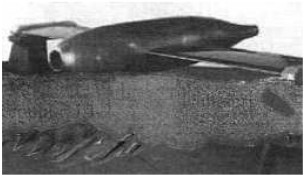
“NACA ramjet”
-Already in the 1940's, Naca was working at its Langley Laboratories on propulsions similar to those of the Campini engine and carried out tests around 1942, abandoning this study in 1943 as not viable.
-The studies on ramjets began in 1941, based on the “Meredith effect”.
-With an eye on the studies of Lorin, Leduc, Schmidt and others.
-The studies were done at the Langley laboratories and also at Lewis's, it was concluded that this propulsion was viable.
-As a predecessor body of NASA, in its interest of promoting and fostering aviation, it studied and executed projects for the general benefit of the industry of its country.
-For example, they made a Campini-type jet engine with a 600 HP Wasp R-1340. This was tested around 1941.
-Or in 1942, a ducted fan motor for 300 lbf of thrust although it was a fan driven by an R-1535 radial piston engine.
-Through NACA, Flader made the XJ-55.
-We have the famous NACA ring of radial engines to reduce drag and improve engine cooling.
-We provide a curious case where radial engines are in tandem and opposed: one puller and the other pusher.
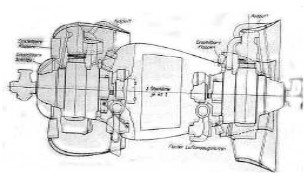
“NACA rings”
-The front engine ring is known to include deflectors to control cylinder temperatures, but the rear engine has a very different ring.
From Appendix 6: It was the US Civil Aeronautics Agency before changing its initials to those of the American Space and Aeronautics Agency: NASA.
-But it turns out that before confirming their work on space issues, they already did these kind of jobs as we can see through their try-outs. For example, the one from 1957 showed Lewis Lab's work on rocket engines at NACA.
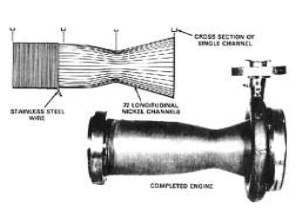
“E. Baehr's spaghetti design rocket engine”
-It was built with a tube system through which the propellant circulates to cool the nozzle according to the so-called “regenerative” system. The engine delivered 22 kN of thrust and is a product of the NACA-Lewis Lab.
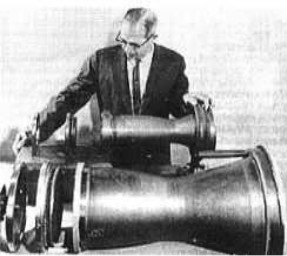
"NACA 22 kN and 89 kN regenerative engines"
-This photograph with the two engines shows the author of the article from which the picture is taken.
-The two engines above were experimented with liquid hydrogen and fluorine, and also with liquid oxygen and hydrogen.
-Taking the issue of hydrogen in aviation, it was in 1957 when a project on a turbojet running on this fuel was presented at a NACA conference by a certain Henneberry.
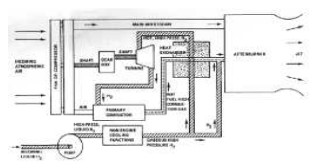
“Schematic of an engine running on liquid hydrogen”
-The installation on a B-57, on which it was actually tested, would be as follows.
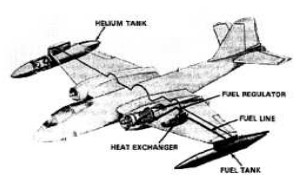
“B-57 with a hydrogen engine”
-The engine that runs on liquid hydrogen is the left one. The tank for this fuel is also the left one. On the right wing tip there is a helium tank to pressurize the hydrogen tank.
-In the middle left there is a heat exchanger to gasify the liquid hydrogen.
From Appendix 10: Below we show a test of a ramjet engine called "2D-ramjet" or two-dimensional ramjet.
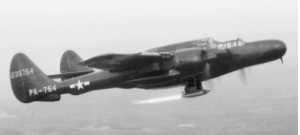
“Flight bench, Black Widow”
Engines of NACA
Model: 2D-ramjet
Arquitecture:
Chambers:
Fuels:
Feed System:
Ignition:
Thrust:
Weight:


